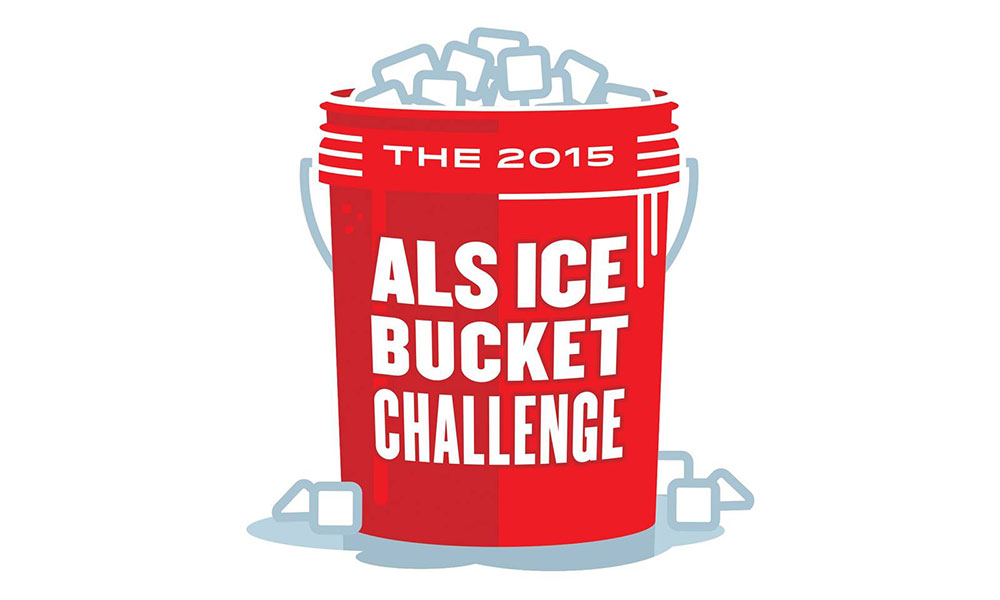In the summer of 2014, a seemingly simple act of dumping a bucket of ice water over one’s head turned into a global phenomenon that took social media by storm. The ALS Association’s Ice Bucket Challenge was not just a viral sensation; it was a groundbreaking campaign that redefined the power of social media in raising awareness and funds for a cause. What started as a grassroots movement quickly became a cultural moment, with celebrities, politicians, and everyday people all joining in to support the fight against ALS (Amyotrophic Lateral Sclerosis).

The challenge was more than just a trend—it was a masterclass in how to engage millions, create widespread awareness, and generate substantial donations, all with a simple, shareable idea. The campaign raised over $115 million for ALS research in just a few weeks, showcasing the incredible impact that can be achieved when a cause resonates with people on a personal and emotional level.
The Ice Bucket Challenge wasn’t just about cold water; it was about igniting a global conversation and rallying a community around a cause that had long been underfunded and overlooked. This case study delves into the strategic brilliance, emotional appeal, and viral mechanics that made the Ice Bucket Challenge one of the most successful social media campaigns in history.
What was the Marketing Challenge?
Before the Ice Bucket Challenge captured global attention, the ALS Association faced a significant marketing hurdle: how to raise awareness and funds for a disease that was largely unknown to the general public.
Amyotrophic Lateral Sclerosis (ALS), also known as Lou Gehrig’s disease, is a devastating neurological condition. Despite its severity, it struggled to gain attention in a crowded landscape of causes. The ALS Association needed a breakthrough—a way to cut through the noise and connect with a broad audience.
Traditional fundraising efforts had limited success, and public awareness remained low. The challenge was clear: how could the ALS Association create a campaign that would not only educate people about ALS but also inspire them to take action?
The solution emerged as a simple, yet brilliant social media campaign. This campaign would go on to revolutionize how people think about viral marketing and philanthropy, turning a modest cause into a global movement.
Insights behind the challenge
The success of the Ice Bucket Challenge was driven by a few key insights that tapped into human behavior and the power of social media.
The Power of Social Proof:
The campaign capitalized on social proof, where people are influenced by the actions of others—especially those they admire. By getting celebrities, influencers, and everyday people involved, the challenge created a ripple effect. As more people participated and shared their videos, others felt compelled to join in, creating a powerful cycle of participation.
The Appeal of Fun and Simplicity:
The challenge itself was simple and fun—dumping a bucket of ice water over your head. This simplicity made it easy for anyone to participate and share their experience, lowering the barriers to entry while fostering a sense of community and shared experience.
The Emotional Connection:
While the challenge was light-hearted, it was tied to a serious cause—raising awareness for ALS. This connection between a fun activity and a meaningful cause struck an emotional chord, motivating people to participate and contribute to something bigger than themselves.
The Viral Mechanics of Nomination:
The campaign’s use of nominations was a genius move. By challenging others to participate, it added an element of social obligation and excitement. This mechanic helped the challenge spread rapidly, as participants eagerly awaited to see who would take it on next.
The Role of Social Media as a Catalyst:
Social media was the perfect platform to fuel the campaign’s viral nature. By encouraging participants to post their videos and nominate friends online, the ALS Association harnessed the power of social platforms to amplify the campaign’s reach, turning it into a global sensation.
These insights combined to create a campaign that was not only viral but also deeply impactful, showing how a well-thought-out strategy rooted in understanding human behavior and social dynamics can lead to extraordinary results.
The Campaign Execution
What began as a simple grassroots initiative quickly evolved into one of the most iconic social media campaigns ever. The ALS Association’s Ice Bucket Challenge was a masterclass in how a creative idea, executed with precision, can spark a global movement. From its humble beginnings to its explosive growth, the campaign’s execution was both organic and brilliantly amplified, turning a fun activity into a powerful fundraising tool that raised millions for ALS research.
The Grassroots Origins:
The Ice Bucket Challenge wasn’t initially linked to ALS. It began as a light-hearted social media trend in mid-2014, where participants would dump ice water on themselves and nominate others to do the same within 24 hours. But when Pete Frates, a former Boston College baseball player living with ALS, and Pat Quinn, another ALS patient, adopted the challenge to raise awareness for ALS, it caught fire. The ALS Association recognized the potential of this viral trend and quickly embraced it, turning it into a fundraising and awareness juggernaut.
Strategic Social Media Amplification:
Once the ALS Association got on board, they leveraged social media platforms like Facebook, Twitter, and Instagram to amplify the challenge. The simplicity of the challenge—combined with the social nature of tagging friends—made it perfect for social media. By August 2014, the campaign had reached its peak, with millions of people around the world posting videos of themselves taking the challenge. The ALS Association encouraged participants to share their videos and nominate friends online, allowing the campaign to spread rapidly across the globe.
Celebrity and Influencer Participation:
A turning point in the campaign’s execution was the involvement of celebrities and influencers. High-profile figures like Mark Zuckerberg, Bill Gates, Oprah Winfrey, LeBron James, and even former President George W. Bush took part in the challenge, posting their videos online and nominating others to join in. Bill Gates, in particular, took the challenge to another level with a highly produced video where he engineered a contraption to dump the ice water on himself. These celebrity endorsements brought massive visibility to the campaign, inspiring millions of people to participate. By the end of August 2014, more than 17 million people had uploaded their challenge videos, viewed over 10 billion times by Facebook users.
Engaging the Public with a Clear Call to Action:
The challenge was straightforward: either dump ice water on yourself or donate to the ALS Association—or do both. This clear call to action made it easy for people to participate while keeping the cause front and center. The dual option of donating or participating ensured that even those who didn’t want to get wet could still contribute. The ALS Association saw donations skyrocket, with over $115 million raised in just eight weeks—a massive increase compared to the $2.8 million raised during the same period the previous year.
Real-Time Response and Support:
Throughout the campaign, the ALS Association was highly responsive, thanking participants, sharing videos, and providing information about ALS. Their real-time engagement kept the momentum going and helped educate the public about ALS, turning each video into not just a fun activity but also a moment of awareness. This interaction was crucial in maintaining the campaign’s momentum and keeping the public engaged.
Leveraging Media Coverage:
As the challenge gained traction, traditional media outlets began covering it extensively. News channels, talk shows, and publications worldwide reported on the phenomenon, further amplifying the campaign’s reach. The ALS Association capitalized on this media attention, using it to drive even more participation and donations. The campaign became a pop culture moment, with everyone from local news anchors to global celebrities taking part.
The execution of the Ice Bucket Challenge was a perfect blend of organic growth and strategic amplification. By the time the campaign concluded, it had raised over $220 million globally for ALS research and awareness. It was a campaign that proved the incredible impact that can be achieved when creativity, timing, and social dynamics align perfectly. Beyond the numbers, the Ice Bucket Challenge left a lasting legacy, funding crucial research and significantly raising the profile of ALS, ultimately changing the future of the fight against the disease.
Results of Ice Bucket Challenge
What started as a viral social media trend quickly snowballed into one of the most successful fundraising campaigns in history. The Ice Bucket Challenge wasn’t just a fleeting online craze—it delivered tangible, life-changing results for ALS research and awareness. From unprecedented fundraising totals to a surge in public interest, the campaign’s impact was felt worldwide, proving the immense power of a simple idea executed with heart and creativity.
Record-Breaking Fundraising:
The Ice Bucket Challenge raised an astonishing $115 million for the ALS Association in just eight weeks during the summer of 2014. Globally, the campaign generated over $220 million in donations, funding vital research and support for those living with ALS.
Global Awareness and Education:
The challenge brought ALS into the spotlight like never before. Searches for “ALS” skyrocketed on Google, with millions of people learning about the disease for the first time. The campaign not only raised money but also dramatically increased public awareness, making ALS a household name.
Scientific Breakthroughs:
The funds raised through the Ice Bucket Challenge directly contributed to several important research initiatives. One of the most significant outcomes was the identification of a new ALS gene, NEK1, which has opened new avenues for potential treatments. The campaign’s impact on ALS research has been profound, accelerating the pace of scientific discovery.
Long-Term Impact on Fundraising:
The Ice Bucket Challenge set a new standard for viral fundraising campaigns. It demonstrated the power of social media to mobilize people around a cause, inspiring future campaigns to leverage similar strategies. The challenge also showed non-profits the potential of engaging the public in creative and participatory ways to drive donations and awareness.
A Lasting Legacy:
Beyond the immediate results, the Ice Bucket Challenge left a lasting legacy. It empowered millions to take action, brought communities together, and gave hope to those affected by ALS. The campaign is now studied in marketing and fundraising courses as a textbook example of how to harness the power of social media for good.
The Ice Bucket Challenge wasn’t just a moment in time; it was a movement that changed the landscape of charitable giving and left an indelible mark on the fight against ALS.
Also Read: A Case Study on Gillette: “The Best Men Can Be” Campaign
To read more content like this, subscribe to our newsletter
Go to the full page to view and submit the form.

